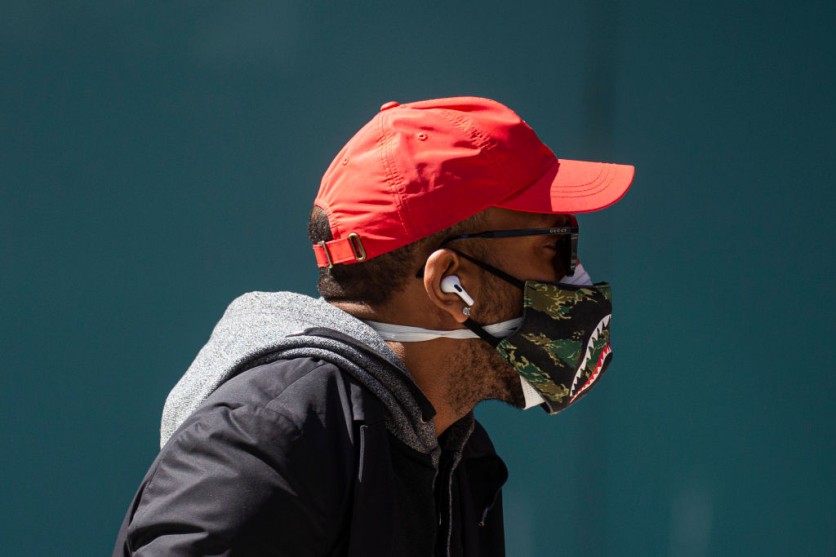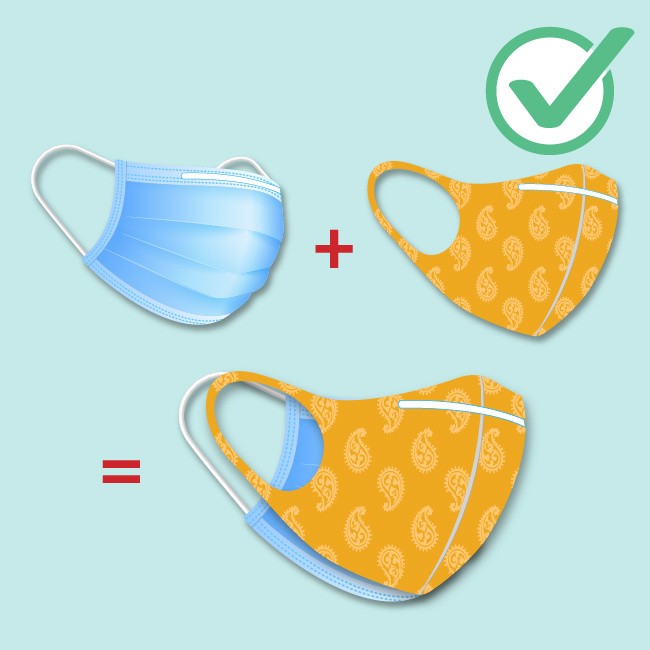
A new 'nose-only' mask is now getting viral on social media. Researchers in Mexico had come up with a new COVID-19 mask designed for people to wear while eating outdoors.
The people behind the idea said that their nose-only mask could protect a person eating and/or drinking in public to a certain degree, compared to those who take their masks off completely.
How does it work?
In a Reuters video published via Yahoo News on Thursday, March 25, two people demonstrated how the nose-only COVID-19 masks should be used.
The two were first shown wearing the usual full mask before taking it off to reveal their nose-only mask, which they had worn underneath their N95 mask. They have then put their N95 masks back on as soon as they are done with their meal.
Researchers in Mexico have made a nose-only Covid mask, which they say reduces the risk of infection of coronavirus during eating and talking. pic.twitter.com/ArUEGZaJj3
— CBS News (@CBSNews) March 24, 2021
The video suggests that the nose-only COVID mask adheres to the Centers for Disease Control and Prevention (CDC) recommendation about double-masking.
Face mask effectivity against virus
Along with several health organizations, the CDC had been strongly recommending everyone to wear a mask to protect themselves from COVID-19.
The CDC guideline that was last updated on February 13 also suggested adding another mask to serve as another layer of protection against the virus.
They also highlighted the importance of choosing the right mask, making sure that the mask fits snuggly against the wearer's face and that the wearer can see and breathe through the mask properly.
An article from BMJ published on February 15 weighed in on CDC's recommendations to justify the effectiveness of wearing a facemask.
They first clarified the effectiveness of wearing cloth masks, citing World Health Organization's advice to use a three-layer fabric mask.
"The filtration, breathability, and fit of the mask are important. If the mask is produced at home, WHO advises an inner absorbent material such as cotton, a non-absorbent fabric such as polyester outside, and a middle filter layer, such as non-woven spunbond polypropylene," the WHO representative told BMJ.
Is double-mask effective against COVID-19?

Moving on to double-masking, the BMJ article cited CDC's research stating that transmission can be reduced by up to 96.5%.
However, a WHO spokesperson countered this statement, noting that they will stand by their prior recommendation due to lack of research data.
The article also clarified that wearing facemasks and observing physical distancing in public must still be observed.
Citing a study published by UK's Scientific Advisory Group for Emergencies (SAGE) titled "Application of physical distancing and fabric face coverings in mitigating the B117 variant SARS-CoV-2 virus in public, workplace and community settings," the article maintains that a potential risk of transmission between two people in close proximity for an extended period remains high.
Meanwhile, a U.S. study cited on the report, titled "The Impact of State Mask-Wearing Requirements on the Growth of COVID-19 Cases, Hospitalizations, and Deaths in the United States," states that wearing fabric facemasks "blocked between 62.6% and 87.1% of fine particles.
The authors added that surgical masks protected the wearer against an average of 78.2% of fine particles while N95 masks blocked 99.6% of fine particles.
The said U.S. study concludes that fabric facemasks remain useful in deterring the spread of COVID-19, and "increasing public awareness of the effectiveness of fabric masks may help in this endeavor."
Related Article : [VIRAL] Effects of Face Masks on Human Body Revealed by Doctor; How to Make Your Own Face Mask
This article is owned by Tech Times
Written by Lee Mercado
ⓒ 2025 TECHTIMES.com All rights reserved. Do not reproduce without permission.




